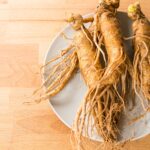Elderberries have long captured the interest of those seeking natural remedies and unique flavors. A common query that arises is, “What does elderberry taste like?” This article delves into that very question, while also providing insights on how to make elderberry tea and how to make elderberry gummies. These versatile berries have much to offer in the culinary and wellness realms.
What Does Elderberry Taste Like?
Elderberries, primarily from the Sambucus nigra plant, present a taste profile that is both intriguing and complex. When ripe, elderberries are dark purple to black and are known for their tart and slightly bitter flavor. The taste can be described as a mix of tangy and earthy notes, with a hint of sweetness that is often overshadowed by its more dominant tartness.
Unripened elderberries, however, can be quite bitter and are not recommended for consumption due to the presence of toxic compounds that can cause nausea. Cooking or processing elderberries mitigates these compounds, making them safe and more palatable.
The Versatility of Elderberry Flavor
The flavor of elderberries lends itself well to various culinary applications. Their tartness makes them a popular ingredient in syrups, jams, and wines, where their robust flavor can shine. When sweetened and cooked, elderberries can develop a deeper, more complex sweetness that complements their natural tartness.
How to Make Elderberry Tea
Elderberry tea is a simple yet effective way to enjoy the benefits of elderberries. It is known for its potential immune-boosting properties, making it a popular choice during cold and flu season. Here’s a straightforward method to prepare elderberry tea at home.
Ingredients:
- 1 cup of dried elderberries
- 4 cups of water
- Honey or sweetener of choice (optional)
- Lemon juice (optional)
Instructions:
- Boil the Water: Start by bringing 4 cups of water to a boil in a medium-sized pot.
- Add Elderberries: Once the water reaches a rolling boil, add 1 cup of dried elderberries to the pot.
- Simmer: Reduce the heat to low and let the mixture simmer for about 30 minutes. This allows the elderberries to release their flavors and beneficial compounds into the water.
- Strain: After simmering, remove the pot from heat and let it cool slightly. Strain the tea through a fine mesh strainer or cheesecloth to remove the elderberries, leaving you with a rich, dark liquid.
- Sweeten and Serve: If desired, add honey or your preferred sweetener to the tea. A squeeze of lemon juice can also be added to enhance the flavor. Serve the tea warm or cold, depending on your preference.
Elderberry tea not only offers a delightful taste but also brings a soothing warmth, making it an excellent beverage for relaxation and wellness.
How to Make Elderberry Gummies

Elderberry gummies are a fun and tasty way to incorporate elderberries into your diet, especially for children or those who may not enjoy the tartness of elderberries in other forms. These gummies are not only delicious but also pack a nutritional punch, providing vitamins and antioxidants.
Ingredients:
- 1 cup of elderberry syrup (store-bought or homemade)
- 1/4 cup of water
- 3 tablespoons of gelatin powder
- Silicone gummy molds
Instructions:
- Prepare the Gelatin Mixture: In a small saucepan, combine 1/4 cup of water and 3 tablespoons of gelatin powder. Allow the gelatin to bloom for a few minutes, which means it will absorb the water and expand slightly.
- Heat the Mixture: Gently heat the saucepan over low heat, stirring constantly until the gelatin is completely dissolved. This should take about 2-3 minutes.
- Add Elderberry Syrup: Once the gelatin is dissolved, add 1 cup of elderberry syrup to the saucepan. Continue to stir the mixture until it is well combined and smooth.
- Pour into Molds: Carefully pour the mixture into silicone gummy molds. Silicone molds are preferred because they make it easier to remove the gummies once they have set. If you don’t have silicone molds, you can also pour the mixture into a shallow dish and cut it into squares once it sets.
- Refrigerate: Place the molds in the refrigerator and allow the gummies to set for at least 2 hours. Once set, pop the gummies out of the molds and store them in an airtight container in the refrigerator.
Elderberry gummies are a convenient and enjoyable way to benefit from the nutritional properties of elderberries. They can be a delightful treat for both adults and children.
The Benefits of Elderberries
Elderberries are not just known for their unique taste; they are also celebrated for their numerous health benefits. These small, dark berries are rich in vitamins, antioxidants, and other beneficial compounds that contribute to overall wellness.
Immune Support
Elderberries are particularly noted for their potential to boost the immune system. They contain high levels of vitamin C, which is crucial for maintaining a healthy immune response. Additionally, elderberries have antioxidant properties that help protect cells from damage caused by free radicals.
Anti-Inflammatory Properties
The antioxidants in elderberries, such as flavonoids and anthocyanins, also have anti-inflammatory effects. These compounds can help reduce inflammation in the body, which is beneficial for conditions like arthritis and other inflammatory diseases.
Heart Health
Elderberries can contribute to heart health by improving circulation and reducing cholesterol levels. The flavonoids present in elderberries help to strengthen blood vessels and reduce the risk of heart disease.
Digestive Health
Elderberries have been used traditionally to aid digestion. They can help alleviate constipation and improve overall digestive health due to their high fiber content.
Antiviral Properties
Research suggests that elderberries may have antiviral properties that can be particularly effective against the flu virus. Elderberry extracts have been shown to reduce the severity and duration of flu symptoms, making elderberry products a popular natural remedy during flu season.
Culinary Uses of Elderberries
Beyond teas and gummies, elderberries can be used in a variety of culinary applications. Their tart flavor adds a unique twist to many recipes, from desserts to savory dishes.
Elderberry Syrup
Elderberry syrup is perhaps the most well-known elderberry product. It’s easy to make at home and can be used as a sweetener for pancakes, waffles, or yogurt. It’s also the base for making elderberry tea and gummies.
Elderberry Jam
Making elderberry jam is another popular way to enjoy these berries. The process involves cooking the berries with sugar and pectin until it reaches a thick, spreadable consistency. Elderberry jam can be used on toast, in pastries, or as a filling for cakes.
Elderberry Wine
Elderberry wine is a traditional beverage that has been enjoyed for centuries. The deep, rich flavor of elderberries lends itself well to winemaking, resulting in a robust, fruity wine. Elderberry wine can be enjoyed on its own or used as a base for mulled wine.
Elderberry Pie
For a unique twist on traditional pies, elderberry pie offers a tart and flavorful alternative. The berries can be combined with other fruits, such as apples or pears, to balance their tartness and create a delicious dessert.
How to Harvest and Prepare Elderberries
If you’re interested in using fresh elderberries, it’s important to know how to harvest and prepare them correctly. Elderberries should be picked when they are fully ripe, as unripe berries can be toxic.

Harvesting Elderberries
Look for elderberries that are dark purple or black and plump. They should come off the stem easily when they are ripe. Always avoid green or red elderberries, as these are unripe and can cause adverse reactions.
Preparing Elderberries
Once harvested, elderberries need to be removed from their stems. This can be done by gently pulling them off with your fingers or using a fork. After destemming, rinse the berries thoroughly under cold water to remove any debris.
Cooking Elderberries
To make elderberries safe for consumption, they should be cooked. This can be done by simmering them in water or juice for about 30 minutes. Cooking elderberries not only neutralizes any harmful compounds but also enhances their flavor.
In summary, this article has delved into the intriguing world of elderberries, exploring their unique taste profile, as well as providing insights on how to make elderberry tea and elderberry gummies. Elderberries offer a complex flavor, often described as a mix of tart, earthy, and slightly sweet notes.
Beyond their culinary applications, these versatile berries also boast an impressive array of health benefits. Elderberries are renowned for their potential to support immune function, reduce inflammation, promote heart health, aid digestion, and even exhibit antiviral properties. Incorporating elderberries into one’s diet through teas, syrups, jams, and gummies can be a delicious way to harness these beneficial compounds.
For those interested in foraging or growing their own elderberries, the article also covered the proper harvesting and preparation techniques to ensure safe consumption. By understanding the nuances of elderberry flavor and learning how to integrate these berries into various recipes and remedies, readers can embark on a flavorful and wellness-focused journey.
Whether you are seeking to explore new culinary adventures or looking to bolster your natural health regimen, elderberries offer a rich and multifaceted experience. This article has provided the necessary information to help you uncover the delights of these remarkable berries and incorporate them into your lifestyle with confidence.




